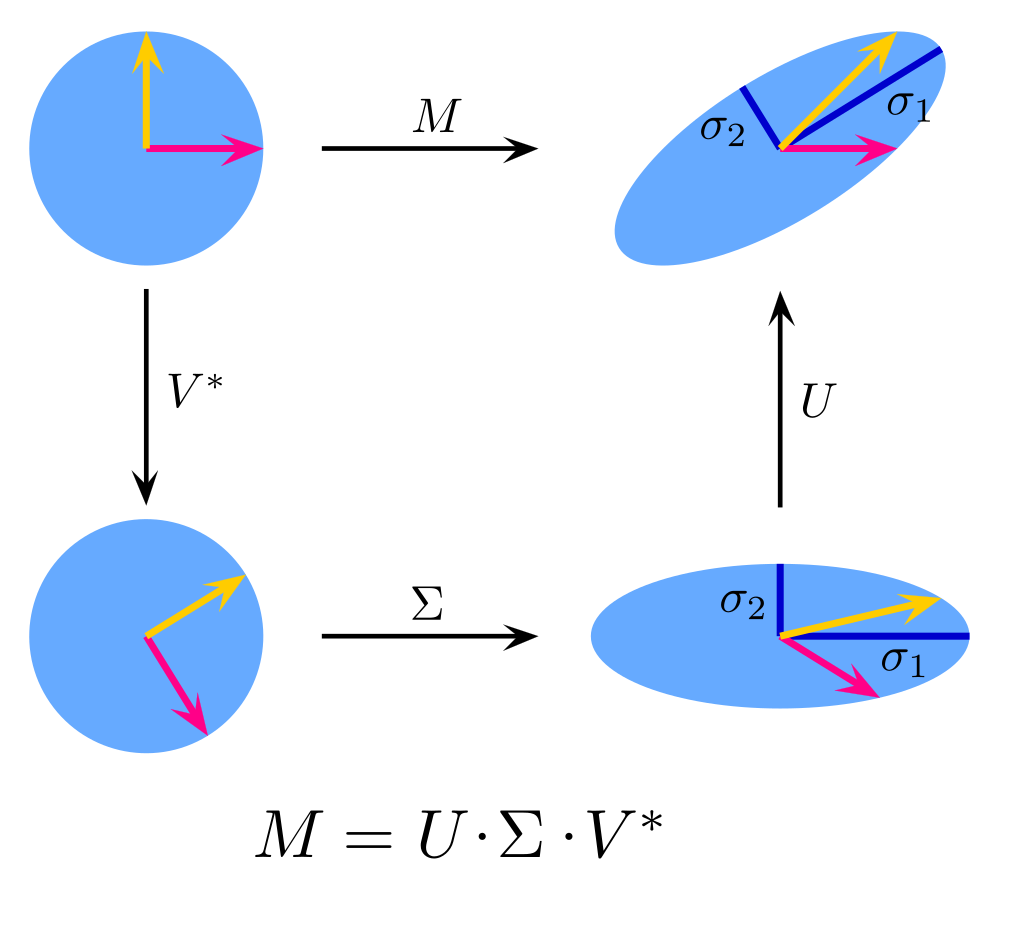Testing Stuff
Testing out some of the common components I plan to use in future posts.
The singular value decomposition (SVD) of any rectangular matrix $\mathbf{A} \in \mathbb{C}^{m \times n}$ is of the form, $$ \mathbf{A} = \mathbf{U}\mathbf{\Sigma}\mathbf{V}^{*}, $$ where $\mathbf{U}$ is an $m \times m$ complex unitary matrix, $\mathbf{\Sigma}$ is an $m \times n$ diagonal matrix with nonnegative real numbers on the diagonal, and $\mathbf{v}$ is an $n \times n$ complex unitary matrix. Often the entries of $\mathbf{\Sigma}$ are ordered in a nonincreasing fashion and the columns of $\mathbf{U}$ and $\mathbf{V}$ are permuted accordingly. The SVD exists for all matrices and is an extremely useful factorization. It characterizes the range and null spaces of $\mathbf{A}$ and $\mathbf{A}^{*}$.
For real matrices $\mathbf{A} \in \mathbb{R}^{m \times n}$, the $\mathbf{U}$ and $\mathbf{V}$ factors become real orthogonal matrices and the SVD is written as $$\mathbf{A} = \mathbf{U}\mathbf{\Sigma}\mathbf{V}^{\sf T}.$$
The following figure taken from the Wikipedia article shows the SVD of a $2 \times 2$ matrix $\mathbf{M}$. The action of $\mathbf{M}$ on the unit disc is shown in the top figure, i.e., $\mathbf{M}\mathbf{x}$ for every $\lVert\mathbf{x}\rVert_2 = 1$. The canonical vectors $\mathbf{e}_1 = \begin{bmatrix}1\\ 0\end{bmatrix}$ and $\mathbf{e}_2 = \begin{bmatrix}0\\ 1\end{bmatrix}$ are shown in pink and yellow respectively.
The similar action is shown via the SVD of $\mathbf{M}$. First we rotate $\mathbf{x}$ by the unitary matrix $\mathbf{V}^*$ to form $\mathbf{V}^*\mathbf{x}$. Then stretch the coordinates via the diagonal matrix $\mathbf{\Sigma}$ before finally rotating via $\mathbf{U}$.
Action of a matrix explained via the SVD
The SVD can be computed in Python by using the numpy function numpy.linalg.svd.
|
|